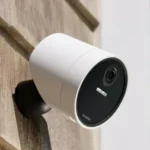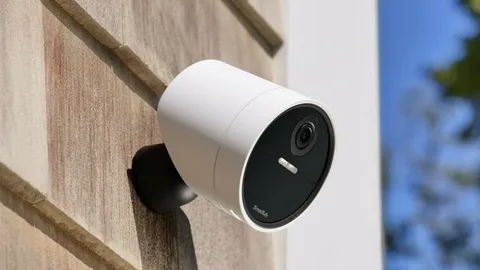When it comes to safeguarding your home and loved ones, outdoor security cameras for home have become an essential investment. These smart devices offer peace of mind by monitoring your property 24/7, deterring potential intruders, and providing clear evidence in case of incidents. If you’re considering upgrading your home security system or installing your first outdoor camera, this comprehensive guide will walk you through everything you need to know about outdoor security cameras for home—from features and types to installation tips and buying advice.
In this article, you’ll learn about the benefits of outdoor security cameras for home, the different technology options available, important features to consider, and how to select the perfect camera that fits your needs and budget. We’ll also cover practical advice on installation and maintenance to help you get the most out of your security system.
Why Outdoor Security Cameras for Home Are a Smart Investment
Installing outdoor security cameras for home is more than just a trend; it’s a smart strategy to enhance your home’s security. Here are some key reasons why these cameras have become vital:
1. Deter Crime
Visible outdoor security cameras act as a deterrent for burglars and vandals. The knowledge that they are being recorded significantly reduces the likelihood of a break-in.
2. Remote Monitoring
Many modern outdoor security cameras offer smartphone integration, allowing homeowners to monitor their property from anywhere, at any time. This remote access provides instant alerts for suspicious activities.
3. Evidence Collection
In the unfortunate event of theft or vandalism, footage from outdoor security cameras for home can be invaluable. Clear video evidence can assist law enforcement and insurance claims.
4. Increase Home Value
A well-secured home with visible outdoor security cameras can increase property value and appeal to future buyers who prioritize safety.
Types of Outdoor Security Cameras for Home
Choosing the right type of camera is essential for effective home security. Here’s an overview of the most common outdoor security cameras for home on the market:
Wired vs. Wireless Cameras
- Wired Cameras: These connect directly to your home’s electrical system and security network. They tend to offer more reliable connectivity and power but require professional installation.
- Wireless Cameras: These cameras use Wi-Fi or other wireless protocols for connectivity and often operate on batteries or solar power. They are easier to install and reposition but may face connectivity issues.
Bullet Cameras
Bullet cameras are long, cylindrical, and usually mounted on walls. They are visible and act as a strong deterrent due to their presence. They offer narrow to medium viewing angles.
Dome Cameras
Dome cameras are more discreet, mounted flush with ceilings or under eaves. Their design protects the lens from vandalism and weather damage. They usually have a wider field of view.
PTZ Cameras (Pan-Tilt-Zoom)
PTZ cameras allow remote control to pan, tilt, and zoom in on specific areas. This flexibility is ideal for larger properties where coverage of different zones is necessary.
Floodlight Cameras
Combining security cameras with bright floodlights, these cameras scare off intruders by illuminating the area and capturing clear video footage at night.
Essential Features to Look for in Outdoor Security Cameras for Home
When shopping for outdoor security cameras for home, certain features can significantly impact your security experience:
Resolution and Image Quality
Look for cameras that offer at least 1080p HD resolution to capture clear and detailed footage. Higher resolutions, like 4K, provide even sharper images but may require more storage space.
Night Vision
Infrared (IR) night vision enables cameras to record in complete darkness. Good night vision is crucial for outdoor security cameras to capture clear images during nighttime or low-light conditions.
Weather Resistance
Outdoor cameras must withstand rain, dust, extreme temperatures, and humidity. Look for cameras with an IP65 or higher rating, ensuring durability and reliability in various weather conditions.
Motion Detection and Alerts
Advanced motion sensors can detect movement and send instant alerts to your phone or email. Some cameras offer customizable zones to reduce false alarms from pets or passing cars.
Two-Way Audio
Two-way audio allows you to communicate through the camera, enabling you to warn intruders or speak to visitors without opening the door.
Cloud vs. Local Storage
Decide whether you want to store footage locally on SD cards or via cloud services. Cloud storage often includes subscription fees but provides safer, off-site backup.
Power Options
Consider power sources such as wired electricity, batteries, or solar panels based on your home’s layout and installation preferences.
How to Choose the Right Outdoor Security Cameras for Home
Choosing the perfect outdoor security cameras for home requires assessing your property’s unique needs:
Evaluate Your Property Layout
Walk around your home and note vulnerable points like entrances, driveways, garages, and backyards. Decide how many cameras you need and where to place them for maximum coverage.
Set a Budget
Outdoor security cameras for home vary widely in price depending on features and brand. Determine how much you’re willing to spend and prioritize features that matter most for your security goals.
Check Compatibility
Ensure that your chosen cameras integrate smoothly with existing home security systems or smart home devices you own, like Alexa or Google Assistant.
Read Reviews and Test Products
Research customer reviews and expert opinions to understand real-world performance and reliability. Whenever possible, test cameras before buying.
Installation Tips for Outdoor Security Cameras for Home
Proper installation maximizes the effectiveness of your cameras. Follow these tips:
- Mount cameras at a height between 8 and 10 feet to avoid vandalism but maintain a clear field of view.
- Aim cameras towards main entry points, garages, and common pathways.
- Avoid direct sunlight or glare, which can reduce image quality.
- Secure your Wi-Fi network and use strong passwords to protect wireless cameras.
- Regularly clean the camera lens and check for obstructions.
Maintenance and Troubleshooting
Keep your outdoor security cameras for home functioning optimally with routine care:
- Inspect wiring and mounts periodically for wear or damage.
- Update camera firmware to benefit from security patches and new features.
- Replace batteries as needed to avoid downtime.
- Adjust camera angles seasonally if foliage or lighting changes impact views.
Popular Outdoor Security Cameras for Home in 2025
To help narrow down choices, here are some top-rated outdoor security cameras for home that combine performance and value:
| Camera Model | Resolution | Features | Price Range |
| Arlo Pro 4 | 2K | Wireless, color night vision, 2-way audio, smart alerts | $$$ |
| Ring Spotlight Cam | 1080p | Floodlight, motion-activated siren, Alexa integration | $$ |
| Google Nest Cam (battery) | 1080p | AI person detection, weatherproof, easy installation | $$ |
| EufyCam 2 | 1080p | No monthly fees, 365-day battery life, local storage | $$ |
| Reolink Argus 3 Pro | 2K | Solar-powered option, 2-way audio, smart detection | $ |
Final Thoughts
Outdoor security cameras for home are a crucial component of modern home security, offering protection, convenience, and peace of mind. By understanding the types, features, and installation tips covered in this guide, you can confidently select the best cameras tailored to your home’s needs.
Investing in reliable outdoor security cameras for home not only helps prevent crime but also empowers you to keep an eye on your property no matter where you are. Whether you opt for a budget-friendly wireless camera or a high-end wired system with advanced features, prioritizing home security is always a wise decision.
Explore the latest trends in technology and innovation at DarkMagazine.co.uk for expert insights and updates.







